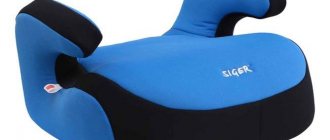In winter, a car operates under high load, this applies to both the engine and the suspension. It should be understood that winter is much more dangerous in operation and no one wants to encounter troubles in the cold. You may have noticed jerky behavior in cold weather or some other strange behavior - this is a clear sign of insufficient preparation.
In the article we will look at the main stages of preparation, because it takes too long to consider all the nuances and rarely does anyone correct all the little things. We will try to cover the little things at least superficially.
Introduction
The cold is already on the doorstep, and right now preparing your car for winter is more important than ever.
At sub-zero temperatures, the machine experiences extreme stress, and if you give up on servicing it, you are at risk of serious and expensive breakdowns. By doing all the preparatory measures properly, you will not only protect yourself from problems, but also extend the life of the car. There are a lot of nuances of preparing a car for the winter cold, but this article will only discuss the essentials.
So, you are required...
How to prepare your car for winter
Why is the cold so insidious?
One of the main problems, which even people who have never driven are probably aware of, is ice, slippery roads and, as a result, the risk of getting into an accident.
But that's not all. It turns out that low temperatures negatively affect the components and assemblies of cars, especially their engines, which are subject to increased wear.
Also, rechargeable batteries are not friendly with the “cons”, whose capacity noticeably decreases during such periods of the year.
Let's figure out how to prepare your car for winter so that it serves you flawlessly in the most severe frosts. Experienced car owners know what needs to be done, let's listen to their advice.
Preparing a car for winter consists of several main stages, namely:
• selection and replacement of tires; • changing process fluids; • checking the battery; • treating the body and glass; • preparing locks and rubber seals for frost.
Let's look at the above steps in more detail.
Tires
Perhaps novice drivers are wondering why change summer tires to winter ones and how they differ?
The answer is quite simple - the composition of winter tires is selected in such a way as not to harden even in the most severe frosts.
Summer tires become “oaky” already at +5 - +3, which is why they lose their grip on the road, and your car ends up looking like it’s on skates.
In addition, studded tires are available that will prevent you from losing control even on ice or compacted snow. The latter is especially true for populated areas where utility workers are lazy to do their job properly cleaning roads in winter.
Process fluids
Preparing a car for winter is unthinkable without replacing the main process fluids with frost-resistant ones. These include: engine oil, coolant, and anti-freeze.
Be sure to check what kind of engine oil is in your car and remember when you last changed it.
The problem is that not all types of lubricants tolerate low temperatures well and quickly thicken under them, which can harm the engine.
Also, if the oil change was more than 10,000 km ago, then before the onset of cold weather it is better to fill in a new one with a viscosity of at least 10W, and preferably 5 or 0W.
Instead of water, “anti-freeze” must be poured into the washer reservoir. In summer, as a rule, everyone uses ordinary water. It needs to be pumped out by pressing on the windshield continuously until it is all poured out.
Don't forget about this so as not to get additional problems with torn hoses and non-functioning injectors!
Battery
Physics does not spare anyone and motorists are no exception. At subzero temperatures, the battery capacity is noticeably reduced.
If your battery is more than three years old, then in cold weather it may simply not produce the energy necessary to start the starter.
The solution is to buy a new battery or, every time the car is left outside for a long time, bring the battery into a warm place.
Body and glass
When preparing a car for frost, it is advisable to take care of special treatment of the body and glass.
The fact is that our valiant municipal services do not hesitate to treat roads with a mixture of salt and sand.
Salt causes increased corrosion of metal parts by getting into joints and holes. To do this, do not skimp on anti-corrosion treatment of body parts.
As for glass and paintwork, you will find various cosmetics with dirt-repellent and anti-icing properties for them in stores.
Locks and seals
Frozen door locks are a common problem in cold weather.
Due to moisture that once got into them, the mechanisms can freeze tightly, which means that until you warm them up with something, you won’t get into your car.
The problem is more than unpleasant and the solution is to treat all keyholes in advance with special water-repellent aerosols.
Rubber seals also do not like winter and tend to freeze to metal surfaces. To prevent this from happening, before the cold weather sets in, treat them with silicone or a thin layer of antifreeze - it’s been tested, it works.
So, colleagues, preparing a car for winter, the useful tips we have reviewed, is an extremely responsible procedure.
For novice drivers, all this trouble may seem unnecessary, but believe me, it is better to do all the above in advance than to spend money on expensive repairs or suffer from winter inconveniences.
Have a nice winter, ice-free roads! See you later!
Change tires
Changing summer tires to winter ones is the basics and the first thing a driver should think about when the weather just starts to deteriorate. You need to go to a tire shop when the thermometer value approaches 7-5°C. Temperatures below are detrimental to summer tires, and driving on old wheels is already life-threatening. It is better to do everything as early as possible - purely for reasons of saving personal time, since from the end of October the tire centers will not be crowded.
Choose winter tires according to the conditions in which the car is used. For large cities where roads are regularly cleaned, friction tires are best suited - they have closer contact with the asphalt surface. However, in the snowy off-road conditions for which the Russian province is famous, studded tires are more relevant.
You should definitely inspect your winter tires for cracks, fallen studs and signs of wear. Inflate the cylinders a little more than the summer version - 0.1-0.2 bar. Measure the tread depth - it should be at least 4 mm (many modern winter tires have a special indicator for this). If it is less, such a tire cannot be used. If microcracks or white spots are observed on the working surface, you should consider purchasing a new set.
Don’t neglect winter tires - their composition is much softer than summer tires, and it can provide good grip not only on snowy and icy roads, but also keep the car on the asphalt even in slush, which is very important in the case of a winter with little snow.
Tip: The best way to save money on re-shoeing your car is to buy complete winter wheels. They do not require beading and balancing; all these operations have already been performed during assembly. The master just needs to secure them to the seats - this is noticeably cheaper than numerous operations with conventional tires. The range of assembled wheels has just expanded for winter - choose what you like.
Replace summer tires with winter ones
Firstly, these are legal requirements. On November 11, 2021, changes to TR CU 018/2011 “On the safety of wheeled vehicles” came into force. The main provisions of this change affected the terms of use of automobile tires. If you do not replace your tires on time, you will pay a fine. Let us remind you that by law one axle must have identical tires. Secondly, drivers on summer tires very often get into traffic accidents.
Some statistics: according to official traffic police data, in the winter of 2017-2018, 36,516 road accidents were recorded on the territory of the Russian Federation.
This is due to the fact that the braking distance on snow or ice is at least twice as long for summer tires. Also, summer tires become harder in cold weather, which leads to cracks in the tires and rapid wear. In addition to using tires according to the season, it is important to monitor the pressure in the wheels, focusing on the manufacturer’s recommendations: lowered wheels have poorer grip on the road.
Read more about when to change tires to winter ones
Charge the battery and clean the terminals
It is important to take care of the condition of your battery so that one sunny, frosty morning you do not find that the car cannot move without “lighting up”.
A winter night does not have the most positive effect on the condition of the battery, and it very quickly loses its charge. In general, frost for any battery is a test of strength. To prevent this from happening, measure the electrolyte level in each jar. An important point: the liquid must be absolutely transparent - the sediment signals that the plates are beginning to crumble, and a short circuit may occur very soon. If the level is low, add distilled water. The electrolyte density for winter should be around 1.27-1.28 g/cm3 ±0.01 g/cm3; in the northern regions - 1.29-1.30 g/cm3. If you can’t increase the standard, you will have to buy a new battery.
It is best to connect the battery to a charger so that the distilled water is well mixed with the electrolyte, and also if the output voltage drops below 12.5 V. It should be charged for at least 8-12 hours, remaining under constant supervision, so it is better to do everything at home.
Tip: Also, do not forget to inspect the wires, clean the terminals from oxidation and tighten the contacts to prevent short circuits and extend the life of the battery.
Check belts and pipes
Winter cold can weaken your car's belts and pipes. To avoid emergency repairs in winter, do the following:
- check belts and pipes for cracks, bends, dents;
- regularly check the coolant level (if it is low after a short time, this is a signal of a possible problem with the hoses in the heating system);
- run your hand along the hose, checking the smoothness of the rubber (roughness indicates chemical damage);
- The hose that goes to the water pump is often damaged - be sure to check it.
Change broken headlights
Properly functioning lighting is one of the key aspects of safe winter travel, as driving in daylight alone is unlikely to be possible. In the morning and evening, only bright headlights will save a car enthusiast, which means that the performance of the lighting cannot be ignored. Over time, the headlights begin to dim, become covered with dirt, scratches and weaken, so that any kilometer risks being their last. It is better to see the problem in advance and change the lamp, which is on its last legs.
Tip: Autumn is the best time to polish old headlights and replace faded xenon lights.
Think about yourself
Things that won't take up much space, but are useful in difficult situations:
- warm blanket;
- woolen mittens and socks;
- a thermos with warm tea (or just boiling water);
- a convenient high-calorie snack that will give you strength (for example, dried fruits or nuts);
- extra charged cell phone battery.
Carry out engine diagnostics
It is important to test your car engine for problems, since even minor problems that you turned a blind eye to in the summer will definitely open up in a new way in the winter at the most unpleasant moment. The key element here is the spark plugs and electrical wiring, which can cause problems with starting the engine and cause it to break down. All worn parts will have to be replaced with new ones.
Features of vehicle preparation for different types of fuel
Many car enthusiasts believe that in winter they should use gasoline with a higher octane number. For example, instead of 92, fill in 95. However, experts recommend continuing to use the gasoline or diesel fuel that is provided for your car brand.
However, there is still a difference between summer and winter gasoline and diesel fuel. It is related to the saturated vapor pressure indicator. It is he who is responsible for the quality of engine starting in winter. In summer types of gasoline and diesel fuel, the DNP indicator is approximately 80 kPa, and in winter types it is from 90 to 100 kPa.
As for cars running on gas, they also have a difference between winter and summer fuel. Winter gas contains much more propane than butane, while the ratio is not so striking in summer gas.
Gas and gasoline gas stations of serious brands in winter automatically change the saturated vapor pressure in all types of gasoline and the ratio of butane and propane for gas. Therefore, the only advice that can be given to car enthusiasts is to refuel at trusted gas stations, avoiding dubious brands.
Change engine oil
We change the oil before winter so that it does not thicken in the cold. Due to the thickened composition, which circulates much worse through the system, the engine parts will rub against each other more strongly and wear out faster during operation. And this is not to mention the fact that an engine with thickened oil will waste more energy from the battery, and it will discharge faster, which is critical in winter. If the last time the oil was changed was 5-10 thousand km ago, feel free to change it to a new one.
Advice: For moderate climates, it is best to take 5W-30 or 5W-40, which are good at any time of the year, because they do not thicken at -30°C and do not deteriorate at +35°C. For northern regions, where the temperature drops below –35°C in winter and stays around +25°C in summer, 0W-40 is suitable. The quality category for gasoline engines should not be lower than SJ, for diesel engines - CD.
You can choose oil for winter in this section.
Preparing the windshield cleaning system. Preparing for winter.
The windshield cleaning system also requires preparation for winter. The fluid in the reservoir should be replaced with a high-quality anti-freeze material, the windshield wiper blades should be replaced with winter ones, and the washer nozzles should be cleaned, at a minimum.
In the summer, every car enthusiast fills the washer fluid tank with regular water. You won't be able to do this in winter. The water will simply freeze in the tank, and you will not be able to use the windshield wipers. Therefore, pour all the water out of the tank and fill it with high-quality antifreeze liquid. You shouldn’t buy the cheapest anti-freeze from the first person you meet on the road. Such a liquid will smell bad and even freeze the first time it freezes. Buy antifreeze only from a trusted store.
If your windshield wiper blades are designed for summer, then they should be replaced with winter ones. And in general, it is recommended to update this part every six months. On some brushes, only the working surface can be changed. This will help you save money.
The washer nozzles can be cleaned with a regular needle. Dirt holes may become clogged, and then the nozzle will not work properly. The same needle can be used to adjust the direction of spraying.
Without servicing the glass cleaning system, you risk losing visibility and visibility at the wrong time on the road.
Take care of thermal insulation
It is more important to do this for residents of the northern regions, where the temperature in winter regularly drops below –35°C. However, for car enthusiasts from areas with a temperate climate, preparing a “warm blanket” for the engine compartment will also not hurt. No control system can better ensure vehicle safety than the car owner himself. Sometimes such a program can even cause harm if it considers the engine not warmed up.
It is most effective to install a heat shield on the radiator, insulate the hood well, install heat-insulating panels on the sides and bottom of the engine compartment, and cover the engine with a car blanket.
Tip: You can also protect the interior of your car for winter: spread material along the bottom, inside the doors, on the partition between the interior and trunk, and in general at all joints where cold air can penetrate.
Body
The winter period is not the best season for cars, especially when the streets are generously sprinkled with salt or other de-icer. Therefore, anti-corrosion treatment of the body will not hurt. Also, the winter season is a great test for paintwork: temperature changes, snow with salt, ice crust - all this contributes to the appearance of microcracks. Therefore, the body needs to be protected with special drugs that will help avoid this.
Checking paintwork and processing thresholds
Treatment of arches with anti-corrosion agent
Replace coolant and check heating
The coolant will have to be changed for those who, in the warm season, noticed that antifreeze was leaking and had to be diluted with water or added more. The diluted composition will certainly freeze in winter, which can be fatal to the engine. In order not to risk its integrity, the old composition must be drained and new antifreeze must be refilled. Replacing the coolant, one way or another, should occur every 50 thousand kilometers.
At the same time, you can verify the integrity of the car’s heating system: see if there are any leaks from the pipes and seals, and if everything is in order with the hoses and their connections. The radiator could become clogged with salt deposits, and this will greatly interfere with the circulation of coolant. It is better to replace old, clogged pipes altogether.
Tip: Poor heating performance may be caused by a malfunction of the thermostat valve, which also requires replacement.
Checking and diagnosing the cooling system. Checking the stove. Preparing for winter.
If you use low-quality or exhausted coolant, you risk defrosting the engine at subzero ambient temperatures. If suddenly, for some reason, you added water to the expansion tank of the cooling system, be sure to change the fluid in the cooling system before the onset of cold weather. In addition, this procedure must be carried out every three years of operation.
If leaks were found in the cooling system in the summer, then before operating the car in winter, everything should be put in order. The cooling system must be sealed. Always remember that car repairs are always more difficult in winter. If some defect in the cooling system appears in the summer, it can be eliminated even on the road, but in winter, it is unlikely to be possible to repair the car on the road.
It will be important to monitor the operation of the thermostat. If, with the first cold weather, you began to notice that the engine does not warm up quickly enough or that the operating temperature of the engine is generally not the same as in summer, then you should replace the thermostat. A faulty thermostat can leave you without warm air in the cabin, the stove will work much worse.
With the onset of cold weather, it is necessary to check how well the car’s heater warms up the interior. Driving with a faulty interior heater in winter becomes impossible. To do this, on a warm car, move the temperature regulator to the hot position and evaluate the air temperature from the deflectors. With a working stove, the air should burn your hands a little. If hot air does not come out of the stove, then there is a malfunction in the interior heating system. All problems with the stove are described in detail in THIS article.
Also, how quickly the car interior warms up on a frosty winter morning depends on the correct settings of the heater. I hope that after reading this article the inside of your car will become much warmer. If the stove is “hot,” then there should be no worries about heating the interior, but in order for the car to warm up faster and retain heat, you should insulate it a little and make the interior of the car even more comfortable.
Before winter use, check the condition of the vehicle's cabin filter.
Check the brake pads and replace the brake fluid
Brake fluid should be changed regularly every two years, and brake pads should also be inspected annually. Even if a car stops under normal conditions without any complaints, this is not a reason to ignore the inspection. Each wheel must brake with the same force, otherwise on an icy road it is very easy to skid and cause an accident. We urgently replace worn pads. We immediately pay attention to the condition of the brake cylinder boots - whether there are any traces of brake fluid leakage on them. In the worst case, their cuffs are worn out and in cold weather they will leak more and more.
Check the brake system
The boiling point of your car's brake fluid should be 180 degrees or higher. It is also important to check the degree of wear of the brake pads, the operation of the pistons and calipers, and the brake hoses for cracks and leaks. Replace if necessary. Check the parking brake. Adjust the tension of the cables: if severe kinks, serious damage to the casing or corrosion are found on them, then replacement is required. And an additional recommendation: check the effectiveness of the braking and parking brake on a test bench to ensure that the braking system of your car is working correctly.
7 tips on how to check your car's brake system
Treat body and glass
Let's not forget about the body either. Due to high humidity in winter, heavy snowfall and cheap salts that utility companies use, even a new car will begin to rust. You can save your car only by thoroughly treating the body with a special anti-corrosion agent. First you need to prepare the lower elements and chipped paintwork, as they are most susceptible to rust. The chips will have to be first painted over, and only then treated against corrosion. We cover the paintwork with polish, and protect the lower part with an anti-gravel compound or protective film.
Additionally, do not forget about other elements of the car that will also have to be coated with a special agent to protect them from harmful influences: glass, headlights, rear-view mirrors and paintwork. This is the perfect tool.
The rubber seals at the door joints will also have to be treated with a silicone compound. During frosts, they can freeze and are easily torn when trying to open the door or trunk. Treatment should be carried out regularly after each wash. Try to start early, before the cold weather.
Advice: After the procedure, let the car sit for a while with the interior open so that the moisture from the seals evaporates.
Preparing the car body for winter
During winter cold weather, the vehicle's coating may also suffer. Therefore, car owners should worry about the body in advance and take measures to avoid metal corrosion.
To prevent rust, you should properly prepare the body:
Carry out a thorough inspection of the body for scratches. You can cover body panels with mastic or wax
It is also recommended to use so-called liquid glass. Experts advise using fender liners and mud flaps to protect fenders and doors from through corrosion. Try to wash your car more often in winter, especially pay attention to the bottom of the car. A mixture of salt and sand can accumulate in various joints and seams and, as it melts, cause serious corrosion. Treat the surfaces of glass and exterior mirrors using cosmetics. Carry out anti-corrosion treatment of the bottom.
The paintwork of a car can be affected both by temperature changes and air humidity, and by the reagents used to sprinkle roads in the winter. Treating the body with dirt-repellent and anti-frost agents will help maintain the original appearance of the car.
Change windshield wiper blades and add anti-freeze fluid
Pre-winter preparation is an excellent reason to change your windshield wiper blades. Over several seasons of active use, they could wear out considerably and not only do they not clean anything, but they also scrape the glass obnoxiously with their hairless bristles. New windshield wipers will come in handy for winter when it snows and your field of vision is greatly limited. It is better to specifically buy their special winter variety, which is significantly softer and does not harden in the cold.
It is also necessary to replace the regular water in the windshield wiper barrel with non-freezing liquid to clean the windshield from snow, ice and dirt. Also make sure the nozzles are not clogged and are adjusted correctly. On Russian roads, which are cleaned very irregularly, a glass cleaning system using an “anti-freeze” is as necessary as air. It is not necessary to drain the water if you have not used all of it - just dilute it. At first, it will definitely cope with mild cold weather. If you do nothing at all, then in winter the water will freeze and you will have to defrost it in a warm garage or use special means.
You can buy a set of winter windshield wiper blades here. We take “anti-freeze” in this section.
Glass
Good visibility is not only comfortable, but also safe. After all, I think so, there is no need to remind once again that windshield wipers, proper blowing and heating of the windows must be in full working order. Therefore, if the brushes leave matte stripes on the glass, then such wipers can be safely thrown away; the best solution would be to buy special winter brushes. You also need to carefully choose a glass cleaner - an antifreeze liquid. The dirty, greasy “slurry” on the glass, which the brushes smear, turns into an opaque whitish film - do not allow this to happen.
Filling glass washer
Windscreen wipers
Lubricate the locks
Another nuisance on a sunny, frosty morning is a frozen castle. The day before, water could have accumulated inside, and at night it froze thoroughly. Result: late for work due to the need to urgently defrost the lock with a lighter.
You can avoid this in the fall if you pour silicone grease inside the keyhole and turn the key in the lock a couple of times so that the liquid spreads properly throughout all the cavities. You can purchase this product here.
Tip: It is recommended to carry out this operation after every winter car wash.
Change of oil
The load on the engine increases during the winter months. This means that the oil will have to be changed more often than in summer (best of all - after every 10 thousand kilometers). In addition, it is necessary to change the oil and oil filter before the onset of cold weather.
It is worth switching from one type of oil to another gradually, since incorrectly selected oil can lead to engine problems
You can find out which oil viscosity is preferable for your car in the car manual. You can't make mistakes when changing the oil on older cars. If you previously used mineral oil during its operation, you cannot suddenly switch to “synthetics”. After all, increased acid characteristics can create problems.
Spark plugs must be replaced. It’s better to install new ones for the winter, but you shouldn’t throw away the old ones (if they haven’t worked 15 thousand kilometers) - they can be returned to their original place in the future summer months.
Take important things with you
A winter road is no joke, and it is impossible to predict what awaits around the bend and where you will have to make an emergency stop. In order to eliminate as many surprises as possible, make sure in advance that you always have the following in your trunk:
- Set of external starting wires. It will help to “light up” from another car in case of a battery failure.
- A tow rope if you have to pull your car out of impassable snowdrifts.
- Jack for emergency wheel replacement.
- Snow brush and rubber ice scraper. The first should be softer and smaller so as not to take up extra space in the trunk, and the second should have an elastic edge so as not to scratch the glass.
- A folding shovel, which will come in handy if the car stalls in deep snow.
- Anti-ice for quick glass cleaning. You can wipe foggy windows with paper towels or napkins.
- Antigel additive for diesel cars. It must be added to the gas tank before refueling to prevent the fuel from thickening in the cold.
- Thick winter mats under passengers' feet to absorb thawed snow from boots.
- And also throw work gloves, a hatchet, a hammer and a flashlight in the trunk - you never know what will happen and when.
"Winter" items in your car
- a small shovel (for digging out snow from a car, for example);
- some crushed stone or sand (in case the wheels slip);
- a set of wires for lighting (we are talking about external engine starting - it can be useful both for you and for helping other drivers);
- tow rope;
- work gloves for dirty work;
- rubber scraper with a brush for cleaning the car from snow and ice;
- a jack to raise the car if necessary;
- a lantern, because in winter it gets dark quite early;
- warm blanket for the car;
- water-repellent spray (for example, WD-40).
Check
The next thing to do is check the condition of the battery. It can be checked very simply with an ordinary voltmeter. You don’t even have to check it yourself, go to a service station or service that directly deals with such checking. If your battery in a calm (cold) state shows a voltage of about 12 Volts, then this is actually not enough. A good, normal car battery should show more before winter. In any case, it is recommended to recharge the battery before winter. If you don’t do this, then there is a chance that one day on a frosty morning you will get into trouble with such a battery.
If recharging does not lead to the desired result or the battery is old and begins to “die”, do not tempt fate. It's better to change the battery.
Important point : If everything is fine with the battery and no additional actions are required, in any case the battery should be clean. At least more or less. The fact is that if your battery is covered with a layer of dust, then there is a chance that it will self-discharge. When the dust gets even a little wet, the terminals will close together and the battery will discharge. Therefore, at least wipe off dust from the top of the battery.
If the terminals are not new and they are slightly oxidized, then it is advisable to clean them and lubricate them with Litol.
By the way, after you have fully charged your battery, the electrolyte density should be 1.27. Accordingly, if the density is less, then you need to add electrolyte to achieve adequate density. As a rule, distilled water is added. Electrolyte is added only when necessary, because too high a density also leads to a drop in capacity.
In winter, starting the car is naturally more difficult, but the starter needs to be turned for no more than 10 seconds. Turn it for 10 seconds, if the car doesn’t start, give it a break for 30 seconds. All batteries produced for the European area are designed for this. Also, if you have a manual transmission, it is highly recommended that you depress the clutch before starting. This way the gearbox does not crank, but only the engine cranks and the load on the battery is less. In this case, the owners of a car with a car factory were out of luck. Such a car may well not start.
Differences in traffic by season
Experienced motorists know that the approach to driving a vehicle at different times of the year should be appropriate. When choosing your driving style, you should take weather conditions into account.
In the spring, the main danger for drivers is dirt roads—the wheels get stuck in the mud. And the melted snow exposes holes and potholes in the asphalt surface. It is not recommended to change tires to summer ones until the roads are completely dry.
Winter tires are marked with the M+S icon, which translated from English means: mud - dirt and snow - snow. Due to the characteristics of the tread, winter tires perform much better on mud than summer tires.
In the spring, motorists are faced with such a dangerous phenomenon as aquaplaning. While driving, a layer of water forms between the tread and the road, which does not have time to flow out of the contact zone. As a result, traction is lost - the wheel “floats” without touching the road surface. In such a situation, most summer tires are powerless.
Due to the peculiarities of the pattern, the winter tread, which is more discharged, is cleared of adhering dirt while moving, and aquaplaning does not occur. It should also be noted that with the onset of already stable warm weather, winter tires become unsuitable due to their softness, hold traction worse and wear out quickly.
In autumn, the main enemy for the driver is wet leaves. Because of it, road grip is greatly reduced. The braking distance of the car increases, as well as the risk of skidding.
The biggest challenges await motorists in winter. Sudden weather changes from frost to thaw complicate the operation of a vehicle, forcing car owners to change their driving style. The road turns into a skating rink after wet rains. There is a danger of getting stuck in a snowdrift after heavy snowfalls.
It is worth remembering that during icy conditions you should not sharply accelerate or brake, or turn the steering wheel sharply. It is necessary to maintain twice the usual distance from the neighboring vehicle.
On slippery roads, cars behave differently depending on the drive device. In areas with a side slope, the rear axle of rear-wheel drive vehicles drifts towards the slope of the road, while the front axle of front-wheel drive vehicles may “skew” towards the slope of the road.
In snowy conditions, the driver should be as visible as possible on the road. Care should be taken to ensure that all lights are in working order so that in poor visibility the vehicle is visible to other road users.











